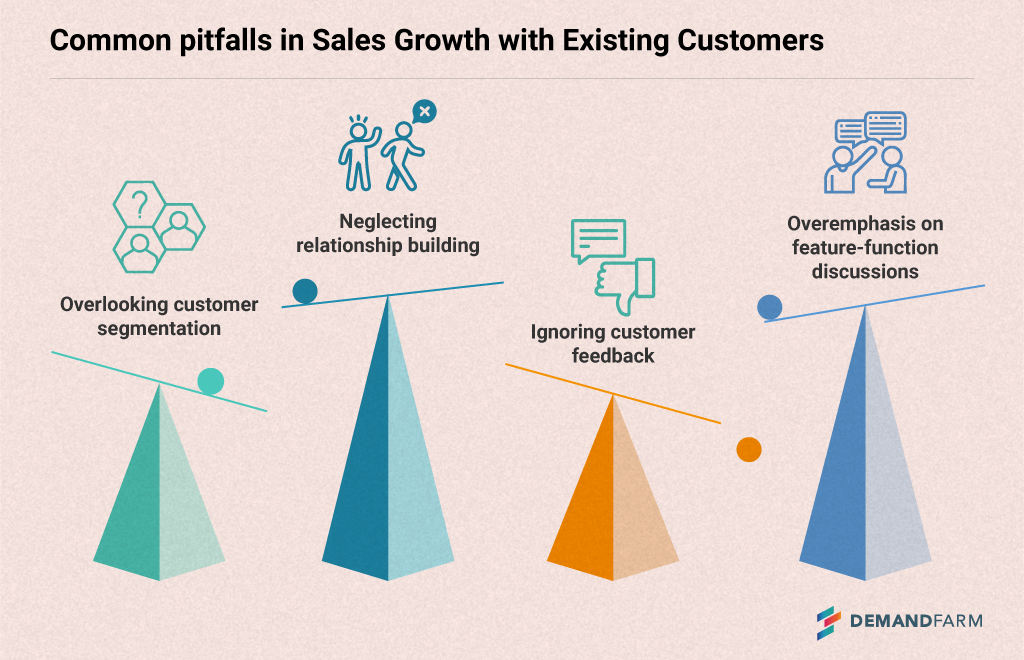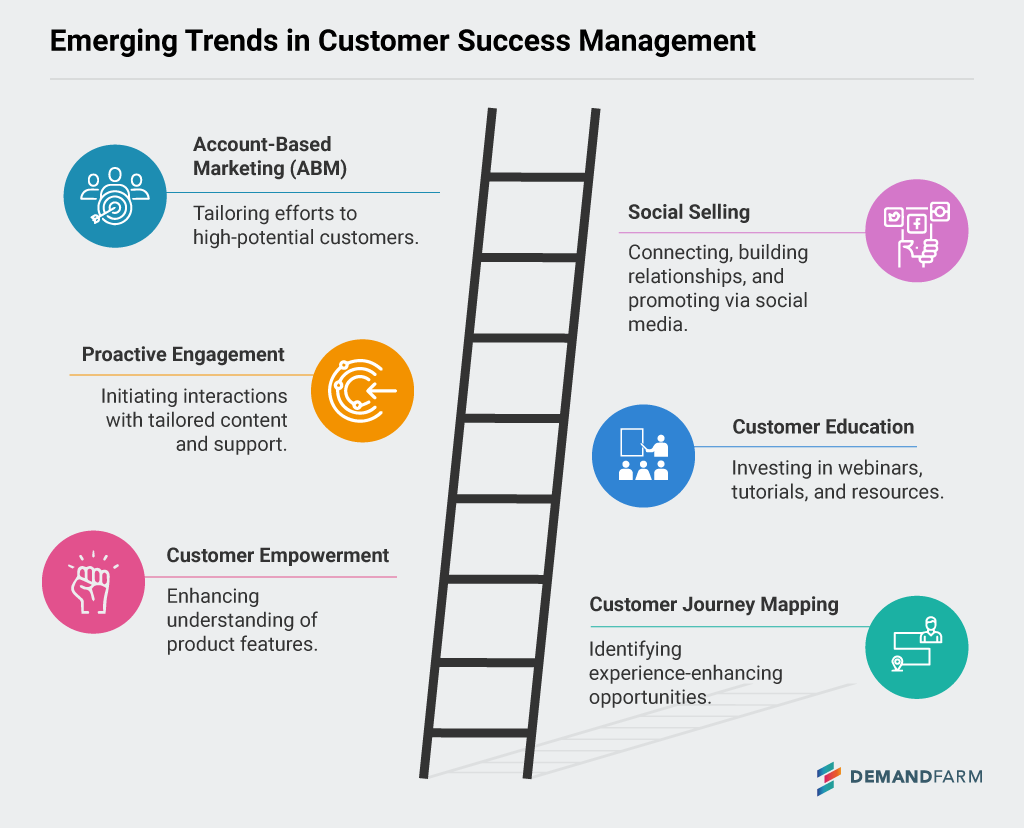In the business world, customer success management is no longer an afterthought; it’s a necessity. Consensus across research confirms: retaining existing customers costs 5 to 25 times less than acquiring new ones. But businesses are realizing that it goes beyond keeping customers satisfied; it’s about truly understanding their needs and delivering value at every touchpoint.
The rise of the digital era has changed the rules of the game. Complex products, multifaceted needs, and fierce competition have become the norm. In this context, a one-size-fits-all approach no longer works.
Success lies in a tailored, strategic approach to customer success management. One that leverages Key Account Management (KAM) principles to retain customers and transform them into brand advocates. KAM principles encompass fostering robust relationships, tailoring solutions, maintaining consistent communication, prioritizing the long term, and constantly reviewing and adapting strategies.
This journey requires a keen understanding of your customers, insightful data, and a commitment to going the extra mile. And it’s a journey that pays off in spades.
Read More: What is Customer Centricity and Why it isn’t the destination?
The Changing Role of Customer Success Managers / CSMs in a Technological World
“This season is an opportunity for the CSM to shine.” (From episode #9 of The Shift podcast).
In today’s ever-competitive business environment, customers expect consistent value and support. Customer Success Managers (CSMs) play an indispensable role in ensuring this. But their role goes beyond just implementation or ensuring customer satisfaction or customer retention.
The changes?
- Multi-faceted roles – serving as advocates, advisors and educators.
- Guide customers through complex technical platforms and maximize value
- Ensure smooth adoption of products or services
CSMs are often tasked with understanding intricate technical platforms and ensuring that customers can effectively utilize them. The platforms they deal with can vary from sophisticated data analytics tools to advanced customer relationship management systems. However, despite technological challenges, CSMs are the ones who ensure that these tools deliver value to customers.
Learn More: Best Customer Segmentation Strategies for Customer Success Teams
Strategies for Sales Growth with Existing Customers: Avoiding Pitfalls
Organizations often fall into common traps when trying to drive sales growth with existing customers. Sherrod Patching, VP – Customer Success, GitLab, highlights a typical pitfall: an overemphasis on feature-function discussions.
She says, “… it’s easy to just pivot to feature function. (But) ensure you understand how these features and functions that they’re so excited about are going to lead them to business outcomes and ensure they’re on the right path.” (Snippets from episode #9 of The Shift podcast).

Particularly for products with high release cycles, it’s not about turning on features for the sake of it. It’s about highlighting those that bring customers closer to desired outcomes, like faster development times or increased efficiencies.
Other common mistakes to avoid:
- Overlooking customer segmentation: Different customers have unique needs. 73% of customers expect companies to understand and 62% expect companies to anticipate these needs. Ignoring customer segmentation can hinder the ability to engage effectively and tailor offerings.
- Neglecting relationship building: Building trust and rapport with customers is essential. It’s not just about the bottom line; it’s about fostering long-term relationships.
- These relationships can bring on upselling and cross-selling opportunities. A McKinsey study reported that upselling and cross-selling can increase marketing ROI by nearly 30% and overall sales by approximately 20%. While results could vary by business, sector and service, the bottom line is sales performance can increase even with existing clients.
- Ignoring customer feedback: Failing to act on customer feedback means missing opportunities to delight customers by improving current offerings and developing new, relevant ones. Shockingly, just over 20% of B2B companies consistently measure and act on insights from customer experience.
By sidestepping these mistakes, organizations can build lasting relationships, optimize sales growth strategies and drive long-term success.
Emerging Trends in Customer Success Management
Several trends are reshaping how customer success management is viewed. One significant trend is Account-Based Marketing (ABM). This targeted approach allows customer success teams to tailor their efforts and resources towards those customers that are most likely to succeed.
Another emerging trend is the growing emphasis on social selling. By leveraging social media, customer success teams can connect with potential customers, build relationships, and promote their offerings.
There is a noticeable shift towards proactive engagement. Rather than waiting for customers to reach out, customer success managers actively engage them, offering content, support and offers tailored to their needs.

Customer education and empowerment are also gaining traction. Customer success teams are investing heavily in webinars, tutorials and other resources that help customers fully understand the features of offerings. This focus on education allows customers to get the most out of the product or service.
Lastly, customer journey mapping is a crucial tool for customer success teams. By understanding the customer’s entire journey, from the first contract and through the relationship, customer success teams can identify opportunities to improve the customer experience.
“This seamless experience for the customer, that’s shared with the customer, that’s documented in systems, that then carries through, becomes a continuation of a single journey.” (Snippets from episode #9 of The Shift podcast).
These trends highlight the increasing complexity of customer success management and the need for innovative strategies to meet customer needs and drive continuous improvements.
Addressing Challenges in Account Planning and Governance
Organizations frequently struggle with account planning and governance – a crucial process that requires strategic plans for customer account management. Challenges often arise due to misalignment among teams, lack of customer insights, poor communication, focus on short-term goals and inadequate resources.
There is a need for a cohesive approach to account planning. Account planning by the Sales team and success planning by the Customer Success team needs to be aligned. Many organizations treat these as separate processes, resulting in siloed approaches. However, ensuring that account plans and success plans operate in tandem is vital.
“But those two need to go hand in hand. What you want to make sure is that you don’t have an account plan that lives over here and a success plan that lives over there. Those two organically go together.” – Sherrod Patching, VP – Customer Success, GitLab. (Snippets from episode #9 of The Shift podcast).
These plans should serve the broader goal of customer satisfaction and long-term success. It’s important to create a success plan that evolves with the customer’s needs. Hence, a continuous need arises to review, coach, and update them for sustained relevance.
Many organizations overlook the importance of integrating these processes, which leads to a disjointed approach to account planning and governance. Overcoming these challenges is essential for organizations to develop effective strategies that drive customer satisfaction and loyalty. Ensuring that account and success plans are integrated and evolve with customer needs is key to achieving sustained success.
The Role of Analytics and Big Data in Customer Success Management
In the digital age, the role of analytics and Big Data is crucial for the success of businesses. This is especially true in the realm of customer success, where understanding customer behavior and preferences is key to providing exceptional experiences.
“In customer success, data is the key piece for us. We have so much available to us through product usage data and those insights can drive something meaningful for the customer.” – Sherrod Patching, VP – Customer Success, GitLab. (Snippets from episode #9 of The Shift podcast).
Indeed! Harnessing Big Data and analytics empowers customer success teams to make informed decisions, predict customer needs, and take proactive actions that drive customer satisfaction and revenue growth. By leveraging product usage data and other insights teams can identify upsell and cross-sell opportunities, optimizing revenue generation and strengthening relationships.
Data enables customers to benchmark themselves against industry players. It goes beyond reporting logins or usage, empowering them to gauge their performance against competitors. Utilizing predictive analytics unveils patterns suggesting possible churn or dissatisfaction, facilitating prompt interventions to enhance customer loyalty.
Over half of all customers now expect personalized offers. With AI and machine learning being used to automate tasks, customer success teams can focus on creating customized solutions for key accounts and aligning customer success with sales goals. The centralized view of customer interactions available via CRM systems and customer feedback platforms ensures alignment between sales, customer success and account management.
Strategic Partnerships: The New Paradigm for Customer Success Management
Integrating KAM principles holds the key to long-term growth. Treat customers as strategic partners, transitioning from transactional thinking to strategic collaboration.
Technological innovation, customer intelligence, and strategic alignment together redefine customer success management. Using data analytics and technology, not as tactics, but as strategic tools uncovers hidden opportunities, identifies challenges and allows offerings to be tailored to customers’ needs.
Going beyond the data to see the customer journey as a partnership builds a culture of co-creation, mutual growth and sustained loyalty. The focus of businesses must evolve from revenue targets to value creation. Customer success must be characterized by insight-driven decisions, shared objectives, and mutual benefits. This approach brings mutual benefits to organizations and their customers.
 On-Demand Webinar: Unfiltered take on AI in Account Planning: Meet DemandFarm’s KAM AI
On-Demand Webinar: Unfiltered take on AI in Account Planning: Meet DemandFarm’s KAM AI 


